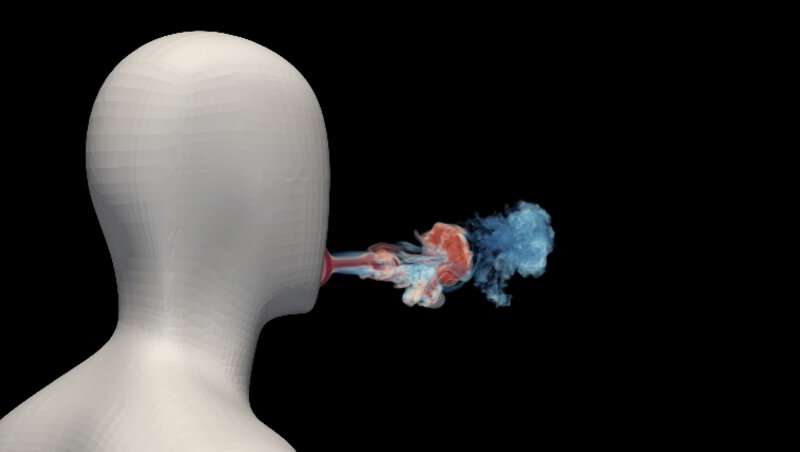
A full-blown Christmas dinner, and a New Year’s Eve party with friends are beloved traditions for many—ones that would be best to forget this year. Aalto University Assistant Professor Ville Vuorinen, who models the spread of aerosols, knows why this recommendation is worth following.
“Coronavirus has been seen to spread both via droplets and aerosols, and both are shed when speaking and singing, for example. As demonstrated also by our newest simulations, larger droplets fall quickly but lighter aerosols can easily float across a table and to the other end of the room, staying close to breathing height. The aerosol content of an enclosed indoor space can increase strongly especially if the space is poorly ventilated. In such a situation, aerosols that enter the respiratory system, and the viruses they might carry, increase sharply,” he explains.
The best way to avoid exposure to the virus is to avoid contacts. Vuorinen says that if this is not possible, the risk of infection can be reduced by wearing masks and through more efficient ventilation in the space.
“According to the World Health Organisation, ventilation can significantly reduce the risk of infection. In cool weather, the simplest way to do it is to briefly open a window or a balcony door for intense window ventilation in the shared space. If a family member has been diagnosed with an infection the best way to prevent the spread of aerosols to other parts of the home is to keep the door shut and to ventilate the room regularly, avoiding cross-draft. The effectiveness of ventilation can be enhanced by placing a fan in front of a window so that it blows to the outside.”
Professor José-Luis Jiménez of the University of Colorado, who is modeling aerosols with Vuorinen, says that contrary to what many people think, aerosols also carry the greatest risk of infection at close distances.
“Aerosol content is diluted as distances grow. The risk of an aerosol infection can be reduced through physical distance, the systematic use of masks in all meetings, ventilation, and hygiene,” he says.
“Based on the computational model developed in my team, we can estimate the risk of infection considering the essential variables, such as volume of the room, number of persons, loudness of speaking, masks and air changes per hour, assuming social distancing. ‘
Professor José-Luis Jiménez gives an example. The model predicts that, for a four-hour gathering between six persons in a poorly ventilated space without mask, five of them would fall ill if the conversation would take place in a loud voice and if one of them would be highly infectious. So, in the end all six would be infected.
“If the duration of the meeting would be halved, if masks would be worn and if the space would be well-ventilated, the model would predict on average less than one person to get infected. Certainly, the model parameters could still be better calibrated in terms of e.g. the precise infectious dose. However, it is essential to note the high relative benefit of the taken pre-cautions.”
Source: Read Full Article